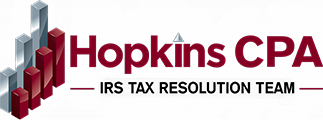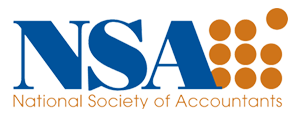Are you thinking about how to make the most of your hard-earned savings for a comfortable retirement? If so, strategic tax planning for retirement is a key piece of the puzzle you won’t want to overlook. It’s all about making informed decisions today that will help you save on taxes and secure a financially stable future. Let’s dive into what proactive retirement tax planning entails and why it’s essential for your financial well-being.
Understanding Proactive Retirement Tax Planning
At its core, retirement tax planning involves a forward-looking approach to manage your taxes both before and during retirement. It’s not just about looking at the tax implications of your income and investments in the current year but also how your actions today can affect your tax burden in retirement. Strategic tax planning aims to minimize your lifetime tax bill, leaving more in your pocket for when you’ll need it most.
Why It Matters?
You’ve worked hard to save for retirement, but without a thoughtful approach to taxes, a significant portion of your nest egg could go to the government rather than supporting your retirement dreams. By being proactive, you can identify opportunities to save on taxes over the long term, whether it’s through tax-efficient withdrawal strategies, making the most of tax-advantaged retirement accounts, or smartly managing your investment taxes.
Understanding Retirement Taxation
Are you wondering how your income will be taxed once you retire? It’s a question many of us think about as we plan for a comfortable retirement. Understanding retirement income taxation is crucial to ensure you’re not caught off guard by unexpected taxes on your hard-earned retirement savings.
Retirement Income Tax Management begins with knowing the sources of your retirement income and how each is taxed. Many retirees have a mix of taxable, tax-deferred, and tax-free income. Taxable income might come from:
- pensions or part-time employment
- tax-deferred income from traditional IRAs or 401(k)s
- tax-free income from Roth IRAs or certain types of life insurance policies.
To optimize your retirement income and reduce taxes, it’s essential to have a strategy. This might include knowing when to withdraw from taxable accounts versus tax-deferred accounts, understanding how Social Security benefits are taxed, and taking advantage of tax-free retirement income sources.
One of the keys to Tax-free retirement income is planning ahead. For example, contributions to Roth IRAs or Roth 401(k)s are made with after-tax dollars, but withdrawals are tax-free in retirement. Similarly, some investments, like municipal bonds, can offer tax-free income under certain conditions.
By being proactive and understanding the tax implications of your retirement income, you can position yourself to minimize taxes and maximize your financial resources during retirement. It’s about making informed decisions that align with your retirement goals and financial situation.
Remember, tax rules can change, and individual situations vary, so it may be beneficial to consult with a financial advisor from Hopkins CPA Firm who can provide personalized advice based on your specific circumstances. This way, you can enjoy your retirement years with one less thing to worry about.
Tax-efficient Retirement Account Strategies
It’s a common goal to maximize our nest eggs while minimizing taxes, and with the right strategies, it’s entirely possible. Let’s dive into how you can achieve tax efficiency with your retirement accounts, focusing on contributions, employer-sponsored plans, and charitable giving.
Maximizing Retirement Savings Contributions
One of the simplest yet most effective strategies is to maximize your retirement savings contributions. Whether it’s through a traditional IRA, a Roth IRA, or both, making the maximum allowable contributions can significantly impact your retirement savings. Traditional IRAs offer tax deductions on contributions, deferring taxes until you withdraw funds in retirement.
On the other hand, Roth IRAs are funded with after-tax dollars, meaning withdrawals are tax-free in retirement. Choosing between them—or balancing contributions to both—can help manage your tax liabilities both now and in the future.
Leveraging Employer-Sponsored Plans
Employer-sponsored plans like 401(k)s are another cornerstone of tax-efficient retirement planning. These plans allow you to contribute pre-tax income, which can lower your taxable income now while your investments grow tax-deferred until retirement.
Many employers also offer matching contributions, which are essentially free money towards your retirement savings. By fully participating in these plans and taking advantage of any matching offers, you’re not just saving for the future; you’re also reducing your current tax bill.
Charitable Giving in Retirement Tax Planning
Incorporating charitable giving into your retirement tax planning can provide both tax benefits and the satisfaction of supporting causes you care about. One method is using a Qualified Charitable Distribution (QCD) from your IRA.
This allows you to donate directly to a charity from your IRA, which can count towards your Required Minimum Distributions (RMDs) and not be counted as taxable income. It’s a win-win, allowing you to meet your RMD requirements without increasing your taxable income, all while supporting your favorite charities.
Diversify with Health Savings Accounts (HSAs)
Health Savings Accounts (HSAs) are often overlooked in retirement planning but can be a powerful tool for tax savings. Contributions to HSAs are tax-deductible, the growth is tax-free, and withdrawals for qualified medical expenses are also tax-free. What many don’t realize is that after age 65, you can withdraw funds for any purpose without penalty, though non-medical withdrawals are subject to income tax.
By incorporating HSAs into your retirement strategy, you’re not just saving for health-related expenses; you’re adding another layer of tax efficiency to your retirement savings.
Consider Tax-Loss Harvesting
Tax-loss harvesting is a strategy that involves selling investments at a loss to offset gains in other investments. This can be a practical approach within your taxable investment accounts, helping to lower your tax bill while keeping your retirement savings strategy on track.
While this doesn’t apply directly to tax-advantaged retirement accounts, it’s a valuable part of an overall tax-efficient investment strategy, ensuring that your taxable accounts are also managed in a tax-smart way.
Strategic Roth IRA Conversions
Roth IRA conversions involve transferring funds from a traditional IRA to a Roth IRA. This move can be strategically beneficial in years when your income is lower, potentially placing you in a lower tax bracket.
While the amount converted is subject to income tax, the money then grows tax-free in the Roth IRA, and withdrawals in retirement are tax-free. Planning these conversions carefully can help manage your tax liabilities over the years, making it an integral part of a comprehensive tax-efficient retirement strategy.
Delay Social Security Benefits
Delaying the start of your Social Security benefits can also play a role in tax-efficient retirement planning. While you can start receiving benefits at age 62, delaying until your full retirement age—or even up to age 70—can significantly increase your monthly benefit.
This strategy not only results in higher lifetime benefits for many people but can also help manage your tax situation in retirement, as a portion of Social Security benefits may be taxable depending on your overall income.
Utilize Age-Based Contribution Catch-Ups
If you’re 50 or older, the IRS allows for “catch-up” contributions to retirement accounts, including 401(k)s and IRAs. These additional contributions can help maximize your retirement savings in the years leading up to retirement.
By increasing your contributions, you’re not only bolstering your retirement nest egg but also potentially reducing your taxable income, resulting in immediate tax benefits while preparing for a more financially secure retirement.
Retirement Income Sources and Tax Planning
Let’s break down some key aspects to help you enjoy your retirement to the fullest.
Rental Income Taxation
If you’re thinking about renting out property as a source of retirement income, it’s important to understand how this income is taxed. Rental income is taxable, but there are also numerous deductions available to landlords. These deductions can include mortgage interest, property tax, operating expenses, depreciation, and repairs. Effectively managing these can significantly reduce your taxable rental income, making your investment more profitable.
Tax-Efficient Retirement Saving
Saving for retirement in a tax-efficient way can lead to more disposable income when you retire. Consider diversifying your retirement savings across different account types like Roth IRAs, traditional IRAs, and 401(k)s. Each has its tax advantages. For example, Roth IRAs offer tax-free growth and withdrawals, while traditional IRAs and 401(k)s provide a tax break at the time of contribution. By spreading your savings across these accounts, you can manage your tax burden both now and in retirement.
Tax Planning for Retirement Withdrawals
When it comes time to withdraw your retirement savings, having a strategy is key to minimizing taxes. Be mindful of the order in which you withdraw from your accounts. Generally, it’s wise to take money from taxable accounts first, then tax-deferred accounts, and finally, tax-free accounts like Roth IRAs. This can help stretch your savings further by taking advantage of lower tax rates on long-term capital gains and qualified dividends in taxable accounts and delaying taxes on other retirement income.
Remember, tax laws change, and personal circumstances vary, so what works for one person may not work for another.
Medicare and Healthcare Considerations
After all, as we age, our healthcare needs typically increase, and being prepared can make all the difference in enjoying those retirement years stress-free. Let’s dive into some key points about Medicare and healthcare considerations for retirees.
Understanding Medicare
Medicare is a federal health insurance program for people aged 65 and older, as well as for some younger individuals with disabilities. It consists of different parts, each covering specific services:
- Part A covers hospital stays, nursing care, and some home health care services. For most people, there’s no premium for Part A, provided you or your spouse paid Medicare taxes while working.
- Part B covers doctor visits, outpatient care, medical supplies, and preventive services. There’s a monthly premium for Part B, which varies based on your income.
- Part C (Medicare Advantage Plans) is an alternative to Original Medicare (Parts A and B) offered by private insurance companies, often including additional benefits like dental, vision, and hearing.
- Part D covers prescription drugs and is also offered through private insurance companies.
Planning for Healthcare Costs in Retirement
Even with Medicare, there are out-of-pocket costs, including deductibles, copayments, and for services not covered by Medicare, like long-term care. Planning for these costs is essential. Here are a few tips:
- Estimate Your Healthcare Expenses: Start by estimating your healthcare costs in retirement, considering Medicare premiums, out-of-pocket expenses, and any additional insurance you might need.
- Consider a Medicare Supplement Insurance (Medigap) Policy: These policies, sold by private companies, can help pay some of the healthcare costs that Original Medicare doesn’t cover.
- Save in a Health Savings Account (HSA): If you’re eligible, contributing to an HSA can be a smart move. The money you save in an HSA can be used tax-free for qualified medical expenses, including Medicare premiums and out-of-pocket costs.
Final Thoughts
Getting ready for retirement means looking at how to handle money from renting out property, saving smart for retirement, and understanding healthcare, especially Medicare. Each part is important to make sure you can enjoy your retirement without worrying too much about money.
Knowing how rental income is taxed can help you make more from your property investments. Smartly saving for retirement can make your money last longer. Besides, learning about Medicare and planning for healthcare costs means you won’t be caught off guard by medical bills.
Retirement planning might seem tough, but it gets easier once you understand these parts. It’s all about making sure your retirement is comfortable and that you have enough money to enjoy it.
It’s good to remember that starting early or getting help from experts, like Hopkins CPA Firm (your trusted CPA Cospus Chriti and beyond), can make a big difference. By looking at the big picture and making smart choices, you can look forward to retirement, knowing you’re well-prepared for what comes next.










